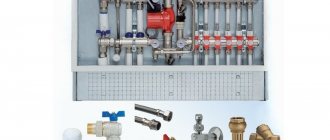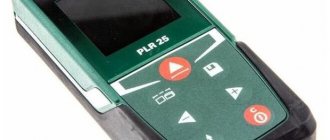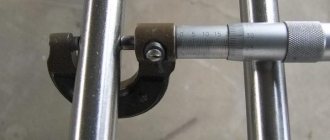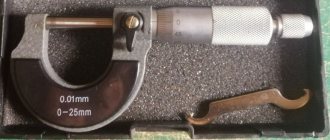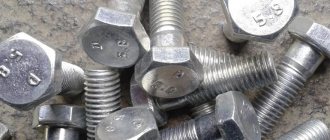Welding joints in the shape of the letter "T", called "T-joints", are present in all loaded structures. They are fillet welds with a perpendicular arrangement of the workpieces. For a small area, the connection must support the design load. T-joints subject to torsion and fracture are subject to special treatment - the seams are checked for internal defects. Following technology helps to avoid them. The type of seam is indicated in the drawing.
Application area
Installation of pipelines, creation of frame structures, ceilings, fences involves the arrangement of parts at right angles. Reinforcing elements are usually attached perpendicularly by welding: beams, channels, rolled profiles. Parts at an angle of 90° are connected by T-welding. Beginning welders at home try to avoid such joints because of the difficulty of fixing parts in a given position.
In production and construction, T-joints are often used. All types of connections are regulated by GOSTs for various types of welding. They can be single-sided or double-sided, with or without edge cutting. It all depends on the expected load, alloy, thickness of the parts being welded.
Types of T-welded joints
Common problems
Novice welders often make mistakes that contribute to the occurrence of defects. Some significantly worsen the quality of the seam, others only affect aesthetic characteristics.
It is necessary to detect defects in a timely manner and eliminate them. The most common problems are uneven filling or differences in seam width. As you gain experience working with fillet welds, errors occur less frequently.
Lack of penetration at the connection point
The defect occurs when the joint is partially filled with melt. This requires timely correction, since the strength of the weld decreases.
We recommend reading Features of an overlap welding joint
The main reasons for lack of penetration are:
- low current setting;
- moving the electrode too quickly;
- improper cutting of edges of thick parts.
To eliminate lack of penetration, increase the power of the arc and reduce its length. If the parameters are selected correctly, the defect will not reoccur.
Example of lack of penetration of a connection point.
Uneven impact
This error is manifested by the formation of pores or sagging. The former are voids located linearly or chaotically, the latter are protruding areas of the melt. Both phenomena are unacceptable because they negatively affect the performance of the finished structure.
The appearance of pores is promoted by:
- improper protection of the weld pool, excessive consumption of inert gas;
- use of low-quality electrodes;
- exposure of the welding zone to wind, which deflects the gas cloud (oxygen in this case reacts with the melt);
- presence of traces of corrosion or dirt on parts;
- improper edge processing.
Sagging occurs when working with filler material due to incorrect selection of welding mode and parameters. These elements are not connected to the main part. It is recommended to remove them mechanically.
Pruning the area
The defect is a depression along the seam. Occurs with increased arc length. The weld pool expands, the temperature is not enough to warm up the edges of the workpieces. The metal immediately hardens, forming undercuts.
To eliminate the defect, reduce the arc length or increase the current.
During fillet welding, an undercut can also occur due to improper holding of the electrode. The melt flows down, causing a groove to appear. In this case, the power of the arc is reduced and shortened.
Welding seam defect.
Seam burn
The defect is a through hole.
Its appearance is facilitated by:
- too much current;
- slow guidance of the rod;
- increased distance between the edges of the part.
To eliminate the defect, select the correct operating parameters of the device and reapply the suture.
Cold and hot cracks
The second type of defects appears during the cooling stage of the metal. They are directed across or along the seam. Cold cracks occur on an already hardened seam when the structure experiences excessive loads.
Such defects lead to gradual destruction of the connection. To eliminate the defects, the seam must be re-formed. If there are a large number of cracks, the edges of the parts are cut off.
Cold cracks during welding.
Incorrect calculations
When choosing incorrect parameters for the operation of the device, different types of defects arise. The seam loses strength and becomes deformed.
The main causes of problems are considered to be:
- Incorrect leg. The quality of the welded joint depends on the correct choice of voltage and the speed of the electrode. The latter must be kept at the same level. If the current is insufficient, the rod operates at low speed, and the base metal does not melt well. At a high value of the parameter, the leg becomes concave and burns are formed.
- Oblique angle. It is quite difficult to install the parts in the desired position. The design loses the required qualities if the tilt of the attachment plate shifts to one of the sides.
Advantages and disadvantages
Unlike other welding methods, T-joints have the following advantages:
- they form a reliable connection in hard-to-reach places;
- they do not require the use of reinforcing pads;
- used for welding workpieces of various thicknesses;
- withstand heavy load.
Flaws:
- to maintain perpendicularity, parts must be fastened before welding;
- one-sided seams are unreliable;
- when welding thin-walled parts, there is a high probability of thermal deformation;
- there is a high risk of internal defects (lack of penetration, discontinuities, craters).
Trajectory of movement
The trajectory of the electrode has a particular influence on the seam. In any case, it has an oscillatory character. Otherwise, it will not be possible to sew the two surfaces together.
Oscillations can be similar to zigzags with different steps between the sharp corners of the trajectory. They can be smooth, resembling movement in an offset figure eight. The path can be similar to a herringbone or a capital letter Z with monograms at the top and bottom.
An ideal seam has a constant height, width, uniform appearance without defects in the form of craters, undercuts, pores, or lack of penetration. The name of the possible flaws speaks for itself. Having mastered your skills well, you can successfully apply any seam and weld a variety of metal parts.
Techniques and features of welding T-joints
When making corner joints, they control the size of the suture leg and the appearance of the roller - they make it as flat as possible. To weld the T-joint evenly, do not make sudden movements with the holder. The arc during welding should not break off during the formation of the bead. The preparatory stage includes:
- stripping of metal in the work area;
- laying workpieces at the desired angle while maintaining the required gap size;
- fixing elements with clamps or tacks.
Pipe welding
When RDS of plugs, flanges, shut-off valves in pipelines is carried out, they are guided by the requirements of GOST 16037-80. It is also used when inserting pipes of smaller diameter. On thick-walled workpieces, preliminary cutting of seams is carried out. Then tacks are made in 4 places, they are arranged in pairs symmetrically around the circumference, dividing it into 4 parts. Then a fillet seam is made.
When inserting, the end of the pipe is adjusted to fit the pipe so that it fits tightly to the surface without forming large gaps. Pipes of small diameter are “finished” with a grinder. When cutting large workpieces for welding, reamer stencils or standard templates are used.
When there are rotary tables, rotary position welding technology is used. The seam forms faster and is even. It is more difficult to weld fixed seams; the bead is formed along curved lines. In this case, welding is carried out in several stages, in sections. The second one begins on the resulting roller, overlapping, so that the T-joint becomes airtight. Depending on the wall thickness, the pipe is welded in one pass or several. Such T-joints must be checked using non-destructive testing methods.
The most optimal technology
The best method for welding corner joints is the “boat” method. This technology allows the arc to reach the root. In this case, you need to properly secure the workpieces. The angle between the welded edges must be straight.
Welding begins from the bottom, gradually moving the weld pool upward. Before cooking, you need to study the movement pattern of the rod. When parts are less than 1.4 cm thick, it is not necessary to bevel the edges. The edges of thicker pieces are cut off.
It is not always possible to install parts for boat welding correctly. When using a different technology, pay attention to the leg of the seam. When its length is up to 8 mm, a single-layer connection is made.
For larger sizes, the seam must be multi-pass. At the first stage, the root is boiled using a thin electrode. After this, the following passes are performed.
Designation on the drawing
According to the standards for all types of welding in the drawings, a T-joint is designated by the letter T, followed by the classification number of the seam, which suggests the type of its creation. For clarity, all symbols are summarized in the table.
| Fillet weld designation | Type of fillet weld | Edge bevels |
| Thickness of welded parts from 2 to 40 mm | ||
| T1 | Single-sided simple. | — |
| Thickness of welded parts from 15 to 100 mm | ||
| T2 | One-way intermittent. | — |
| T3 | Double-sided. | — |
| T4 | Double-sided with staggered arrangement. | — |
| Thickness of welded parts from 30 to 120 mm | ||
| T5 | Double-sided intermittent. | — |
| Thickness of welded parts from 3 to 60 mm | ||
| T6 | Unilateral; | beveled on the seam side. |
| T7 | Double sided; | beveled on one side. |
| Thickness of welded parts from 8 to 100 mm | ||
| T8 | Double sided; | curvilinearly beveled on one side by 2/3 of the thickness of the part. |
| T9 | Double sided; | symmetrical on 2 sides. |
| Thickness of welded parts from 12 to 100 mm | ||
| T10 | Double sided; | symmetrical on 2 sides. |
| T11 | Double sided; | symmetrical on 2 sides, curvilinearly beveled. |
Curvilinear bevels with an uneven surface ensure the formation of a complex suture bead of a T-joint. When staggered, the size of the second gap is larger than the first. When cutting edges on both sides, a strong T-joint is formed that resists fracture.
The types of T-welds indicated in the table are used when installing various welded structures. There is a system of additional signs indicating additional processing of seams, the size of the leg, and the length of the welded area. This information is indicated on the extension arrows.
About the specifics of the process in general
Before starting welding, you need to prepare the joints. They should form a right angle. One part is placed horizontally, the other – vertically.
We recommend reading Welding vertical and horizontal seams
The edges of T-shaped structures require mandatory cutting. However, this step is skipped when working with lap seams. The connection is formed in the corners formed when metal sheets are placed on top of each other.
The classic fillet weld consists of two structural elements connected to each other. In this case, cutting off the end of one of them is required.
Cutting edges for butt joints.
What is a weld seam
To begin with, let’s define the concepts of “welding seam” and “welding joint”, because some sources consider them to be one and the same thing, others separate the formulations.
The shortest definition: a weld is a permanent connection by welding.
The second option reveals the physics of the welding process as such: a weld is a section in which two or more parts are connected as a result of crystallization or deformation of a substance, or one and the other together. One way or another, it is more logical to take welding seams and joints as one and the same process.
One of the oldest and most famous standards among specialists is “GOST 5264 – 80 Manual arc welding. Welded connections." This GOST was put into effect back in 1981, it still copes with its tasks perfectly: the main types of welds, their sizes, structural elements and instructions on how to correctly lay a weld are clearly listed. An excellent example of a document that does not need adjustments over time.
Seam defects
Almost all types of welds and joints have defects after the welding process is completed. Some of them are subject to correction, while others have to be sent to marriage.
The regulatory documents specify the requirements for welds, which determine which defects in which types of welds are permissible and their geometric parameters. Compliance with these requirements is strictly necessary, since their presence can cause structural destruction during operation. GOST 5264 defines the classification of existing defects. Permissible deviations from the norm must be indicated in the drawing for the product.
There are reasons that cause different types of defects. These may include both objective ones, for example, poor-quality material or malfunction of the equipment used, and subjective ones - errors during the production process, insufficient qualifications of the welder, violation of the technological process.
The causes of defects also include: choosing electrodes of the wrong size, turning on a mode inappropriate for the type of welding on the equipment, voltage fluctuations in the electrical network, and inappropriate process speed. The occurrence of defects can be caused by the absence or insufficiency of preliminary preparation. When welding outdoors, bad weather conditions may adversely affect you.
Before starting welding, you must ensure that the equipment used is in good condition and is working properly. The deadline for the next verification must not be missed, which is indicated in the passport for it.
There are three types of defects resulting from welding:
- the location of which is the outer surface;
- inside the welded joint;
- end-to-end.
External defects are clearly visible during visual inspection, from which inspection of the resulting welding joint should begin. External defects include sagging, cracks, bulges and depressions, undercuts, and fistulas. These also include the presence in the weld of sections that differ in width, and in corner joints - different sizes of legs.
The causes of internal defects may be insufficient quality of the base material or violation of welding technology. Cracks can appear not only on external surfaces, but also inside joints, where they can become sources of increasing stress, which can lead to structural failure. One of the reasons for their appearance is too rapid cooling.
Internal defects include lack of penetration, which can appear when rust or scale has been left on parts. Another reason for lack of penetration can be a small amount of current. If a large unmelted section is found, then remelting of the joint will be required. Gas-filled pores may form inside the weld. The reason for their appearance is foreign impurities and excess moisture. If the technology is violated, then inclusions of tungsten and slag may appear inside the weld.
Through defects are pores that extend through the entire thickness of the seam. Such a defect can be detected by visual inspection.
Control methods
All types of welding seams must undergo inspection after completion of the process. Particularly stringent requirements are imposed on structures with increased responsibility. In addition to visual inspection, there are other control methods.
Capillary
The most commonly used method is the capillary method. To use it, you must have special liquids called penetrants or indicators. These liquids have the ability to penetrate cracks of any size, even the smallest ones. Penetrants are brightly colored, so the presence of cracks becomes noticeable upon visual observation.
The application of indicators is carried out after cleaning the surfaces and drying them. The liquid is applied by wetting or spraying. If the product is small in size, it can be immersed in a container with penetrant. With the vacuum method, the liquid is drawn into the void, and with the compression method, it is forced inside by air pressure. The ultrasonic method consists of filling voids with indicators with ultrasound, and the deformation method drives the penetrating liquid with vibrations of the sound wave.
Magnetic flaw detection
This method can only be used for ferromagnetic compounds. With its help, cracks located inside and inclusions of foreign bodies are identified. To create a magnetic field, you need a device called a flaw detector. It can be used to detect microscopic cracks.
There are several testing methods using magnetic flaw detection:
- Magnetic particle . Ferrimagnetic powder is used, usually consisting of iron particles. It can be dry, or presented in the form of an aqueous emulsion or suspension. When the powder moves uniformly over the surface, it encounters a defect and forms an aggregation. Its size and shape correspond to the parameters of the defect.
- Magnetographic . Surface examination is carried out in conjunction with a magnetic carrier tape. Recording of information from the tape is carried out by special flaw detector devices.
Induction method
Control occurs using induction coils. They are connected to registrars. During the movement of the induction coil, when it meets the location of the defect, the magnetic flux changes and an electromotive force appears. A special device registers the induced current.
Ultrasonic method
Ultrasound, encountering a defective area, changes its direction, which is recorded by a special device. The ultrasound method has several varieties. The method allows you to identify a large number of different defects. It can control all main types of welded joints. The method is safe and can be used for field work.
Radiation method
Allows you to detect pores, areas of lack of penetration, foreign inclusions, cracks. Illumination is carried out with x-rays and gamma rays. The passage of the rays is recorded by a special device. Defects are identified by studying the resulting x-ray image.
Calculation of standards
Regulatory documents define existing types of welding, types of welds and joints and their calculations. First of all, SNiP refers to such a document. It contains rules and regulations that must be followed when carrying out the welding process. SNiP specifies the requirements for the following standards:
- time;
- workings;
- electricity consumption;
- components.
The concept of time consumption includes not only the time spent on the production process itself, but also the auxiliary time necessary for delivering product parts, equipment, tools, and gas cylinders to the welding site.
The time required for the welder to change into a protective suit is taken into account, as well as the time for breaks for rest and lunch. This also includes time for preparatory work before welding and cleaning up after welding.
Additional time is given to set the necessary parameters on the equipment, check its performance, ignite the arc, and apply flux. When making calculations, the qualifications of the performer and his experience are taken into account, which affect the speed of all operations. Tables and formulas are used to calculate time.
Performance standards refer to work that must be completed within a certain time. The unit of measurement can be the value of meters of weld made in one hour, or the number of connections made during this time.
Electricity consumption is an important planning component. The unit of measurement is kilowatt-hours. In addition to the electricity required to operate the equipment, the costs of lighting the welder’s workplace are taken into account.
Necessary expenses include the cost of components. These include tools and accessories, including those necessary for preparatory work. The cost of components includes the cost of purchasing electrodes, flux, and gas.
The standard cost components include wear and tear of equipment and individual components such as roller guides. To avoid different interpretations, all regulatory documents provide a clear definition of what types of welded joints there are and what types of welds there are.
We cook pipelines, special requirements
Only experienced, certified and highly qualified craftsmen are allowed to work with industrial pipelines.
Pipe connections belong to the vertical method with all the “vertical” nuances. The peculiarity lies in the angle at which the electrode is held, this is an angle of 45 degrees. The width of the pipe seam can reach 4 cm, it depends on the thickness of the pipe itself. There are separate standards for this type of welding, for example, GOST 16037-80 describes the dimensions of seams for various connections of pipeline structures.
